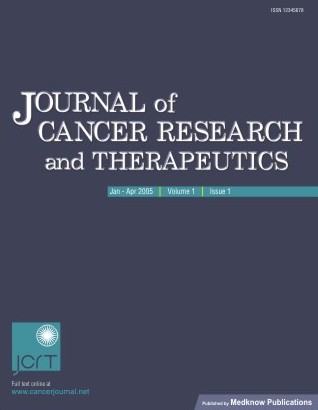
|
Journal of Cancer Research and Therapeutics
Medknow Publications on behalf of the Association of Radiation Oncologists of India (AROI)
ISSN: 0973-1482 EISSN: 1998-4138
Vol. 1, Num. 2, 2005, pp. 116-116
|
Journal of Cancer Research and Therapeutics, Vol. 1,
No. 2, April-June, 2005, pp. 116
Book Review
Artificial Neural Networks in Cancer diagnosis, prognosis, and
patient management
Raouf N. G., Naguib,
Gajanan V. Sherbet.
Code Number: cr05026
Neural networks is a tool of pattern analysis, prog-nostication
and adaptive learning with capabilities to answer questions like – ‘what if’. ‘Neural net-work’ simulates architecture of biological neural networks. The simplest one is single layer. Gener-ally an artificial network consists of many process-ing elements fused together in layers. It has input component, processing component and the output component. Endpoints like survival, toxicity or, prob-ability of nodal involvement constitute output points while weighed variables form the input. Process-ing units are organized into groups called layers and, as such, a typical network consists of a sequence of layers successively connected by full or random connectors. The uniqueness of the neural networks is their capability to learn. The learning process in-cludes associative mapping like, auto association, hetro association, nearest neighbour recall and in-terpolative recall. One another way of learning is by regularity detection. The neural networks are of two types fixed & adaptive.
The adaptive networks are dept in both supervised and unsupervised
learn-ing. The behaviour of the network can be linear, threshold or
sigmoid. ANN have regained their prominence after a phase of obscurity.
Hence, the above mentioned book is a timely addition. The book has
a collection of articles written by various re-searchers. The book
assumes the readers to be fa-miliar with ANN. It would have enticed
the first time readers if the introductory chapters had elaborated
on the essential concepts of ANN, may be with his-torical background.
The book should definitely in-terest an intelligent clinician as it
covers areas of application of ANN in lung, prostate, urological can-cers
as well as oral cancer. Most of these chapters are generally comprehensible
to clinicians though a chapter on probabilistic framework for classifica-tion,
which includes Baysion decision theory is full of mathematics, thus
a little inaccessible.
Copyright 2005 - Journal of Cancer Research and Therapeutics
|
